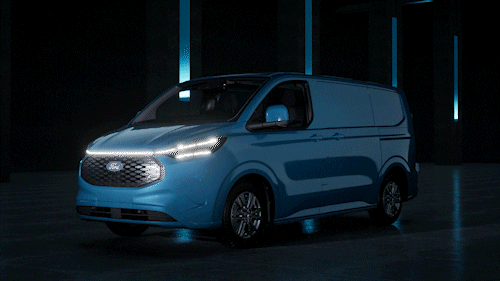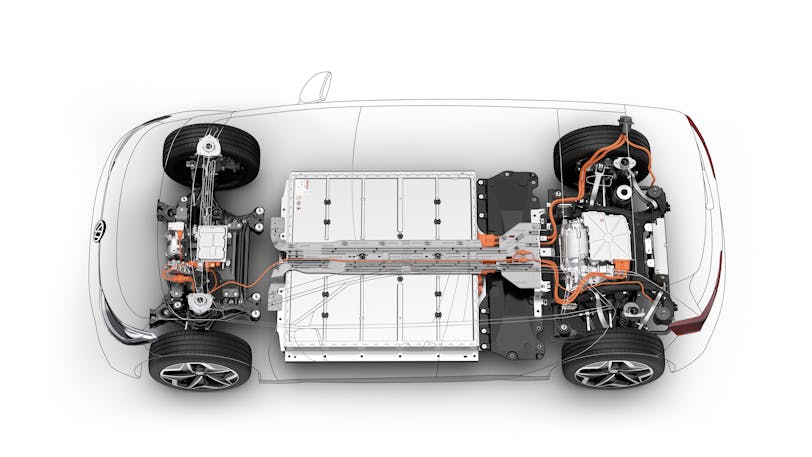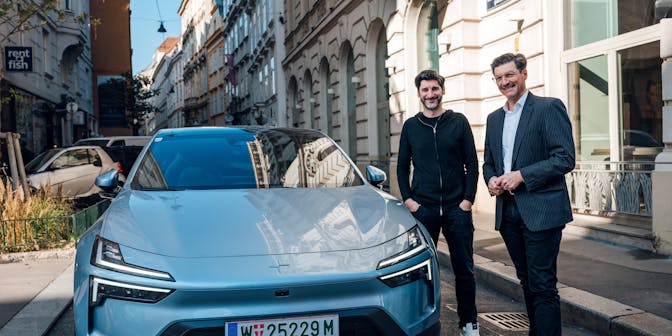Know your EV: Embedded carbon and EVs
Have you ever heard the term "embedded carbon" and wondered what it means and why it might be important when it comes to electric vehicles? Read on...
Electric vehicles are often championed as a cornerstone of the transition to a low-carbon future. A statement we're fully behind here at DriveElectric.
They produce no tailpipe emissions, significantly reducing greenhouse gases compared to their internal combustion engine (ICE) counterparts. However, the environmental impact of EVs is not solely determined by their operation.
A critical aspect to consider is the embedded carbon in the vehicle manufacturing process, particularly in the production of batteries.
Furthermore, the decision to purchase new versus used EVs has significant implications for overall carbon footprints.

Understanding embedded carbon
Embedded carbon refers to the total amount of carbon dioxide (CO2) emissions produced during the manufacturing process of a product.
For EVs, this includes emissions from mining raw materials, manufacturing battery cells, assembling the vehicle, and transporting it to the market.
A substantial portion of the embedded carbon in EVs comes from the production of lithium-ion batteries, which are energy-intensive to manufacture.
Anything that is produced has some level of embedded carbon to consider, whether that's a complex power station or a plastic brick toy set.
Battery Production and Carbon Footprint
The battery pack is the heart of an EV and represents the most significant source of embedded carbon. The extraction and processing of materials like lithium, cobalt, nickel, and manganese are particularly carbon-intensive. According to various studies, producing a single kilowatt-hour (kWh) of lithium-ion battery capacity emits between 56 to 494 kilograms of CO2, depending on the energy sources used in the manufacturing process and the efficiency of production technologies.

For instance, an EV with a 60 kWh battery pack could thus have an embedded carbon footprint of 3.36 to 29.64 tons of CO2 just from the battery alone.
This significant carbon cost occurs before the vehicle has driven a single mile.
However, some of the latest battery packs have started to remove rare earth materials from the production process reducing the amount of embedded carbon in the vehicle.
New vs. Used Electric Vehicles
When considering the carbon footprint of EVs, the choice between buying new or used plays a crucial role.
- New Electric Vehicles: Purchasing a new EV means adding another vehicle to the global fleet, with all the associated embedded carbon from manufacturing. While new EVs tend to have the latest technology, better range, and improved efficiency, the initial carbon cost can be substantial.
- Used Electric Vehicles: Opting for a used EV helps mitigate the carbon footprint because the embedded carbon from manufacturing has already been "paid off" by the previous owner. Extending the lifespan of an existing EV maximizes the utility of the resources and energy invested in its production, making it a more sustainable choice. Furthermore, used EVs often come at a lower financial cost, making them accessible to a broader range of consumers.
The Lifecycle Emissions Perspective
To comprehensively understand the environmental impact of EVs, it is essential to consider the entire lifecycle of the vehicle - from production to disposal. Lifecycle emissions include the embedded carbon in manufacturing, the operational emissions (dependent on the electricity grid's carbon intensity), and the end-of-life disposal or recycling of the vehicle.
- Operational Emissions: EVs produce zero tailpipe emissions, but the carbon footprint of driving an EV depends on the energy mix of the electricity grid. In regions where the grid is powered by renewable energy, EVs have a much lower operational carbon footprint compared to areas reliant on fossil fuels.
- End-of-Life Management: Proper recycling and disposal of EV batteries are critical to minimising their environmental impact. Efficient recycling processes can recover valuable materials and reduce the need for new raw material extraction, thereby lowering the embedded carbon of future batteries.
Policy and Consumer Choices
Policymakers and consumers alike play vital roles in reducing the embedded carbon of EVs. Governments can encourage sustainable practices by:
- Supporting Recycling: Investing in battery recycling infrastructure and technology can help mitigate the embedded carbon of EVs. Effective recycling processes reduce the need for new raw material extraction and lower overall emissions.
- Promoting Renewable Energy: Transitioning electricity grids to renewable energy sources can significantly reduce the operational carbon footprint of EVs. Policies that support solar, wind, and other renewable energy projects are crucial.
- Encouraging Used EV Markets: Incentives for purchasing used EVs can help maximise the use of existing resources and reduce the need for new vehicle production. This can include subsidies, tax breaks, or other financial incentives for used EV buyers.
Consumers and businesses, on the other hand, can make more informed decisions by considering the total lifecycle emissions of their vehicles.
Choosing a used EV, supporting sustainable practices, and advocating for renewable energy are ways individuals can contribute to reducing the overall carbon footprint of transportation.
Electric vehicles offer a promising path to reducing greenhouse gas emissions and combating climate change.
However, to fully realise their potential, it is essential to address the embedded carbon in their production, particularly in battery manufacturing. By understanding the implications of new versus used EVs and supporting policies and practices that reduce embedded carbon, we can make more sustainable transportation choices that benefit both the environment and society.
Published: Jul 2024
More EV guides
Why 2025 is a turning point for SME fleets

6 surprising things you didn’t know about electric vans
Understanding Vehicle Excise Duty (VED) or "Road Tax" for EVs
